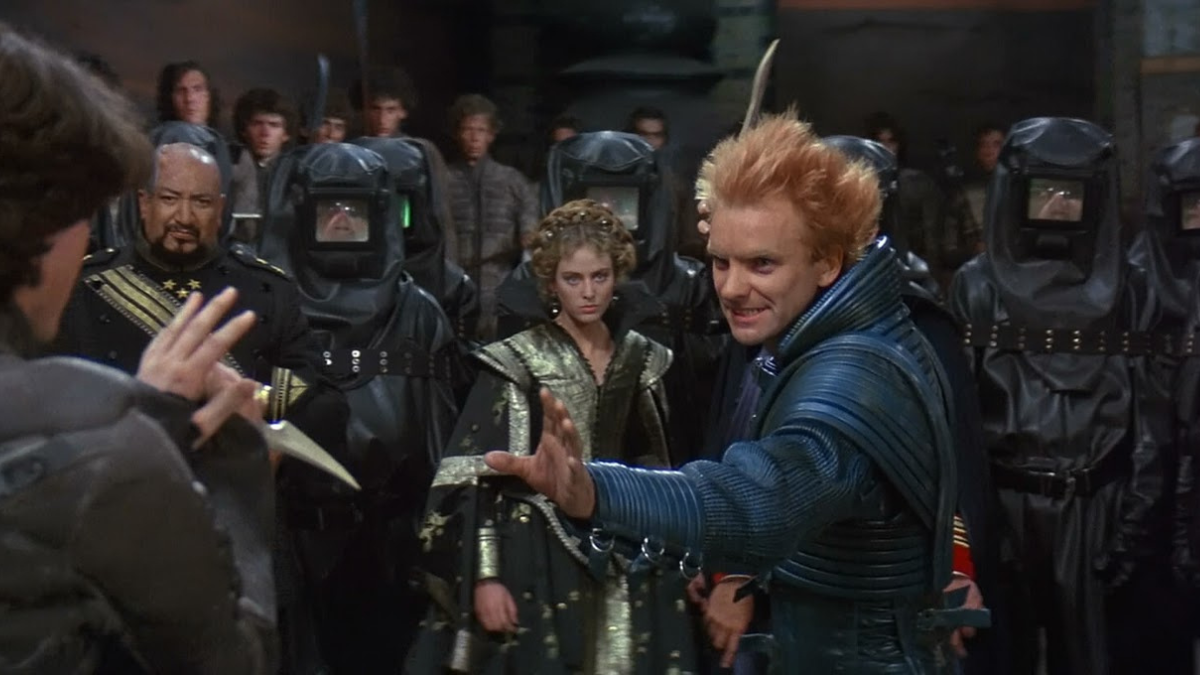Welcome to the VH Stories, in the realm of science fiction, few tales have captivated the imaginations of audiences quite like Frank Herbert’s masterpiece, “Dune.” With its richly woven tapestry of interstellar politics, mysticism, and ecological themes, the epic saga transported readers to a distant future where a desert planet named Arrakis held the key to power and survival. In 1984, director David Lynch dared to bring this beloved literary work to the silver screen, giving birth to a visually stunning and thought-provoking film that remains an emblem of its time. Join us as we embark on a journey to Arrakis and delve into the enigmatic world of “Dune” (1984).
Setting the Stage: The World of Arrakis
“Dune” is set in a distant future where noble houses, spacefaring guilds, and the mysterious Bene Gesserit Sisterhood vie for control over the coveted planet Arrakis. Renowned for its prized resource, the spice melange, Arrakis becomes the center of a political struggle that shapes the destiny of the entire universe. David Lynch’s adaptation sought to capture the intricate world-building of Herbert’s novel, bringing to life the towering sand dunes, the grandiose structures of the cities, and the treacherous landscapes of the desert.
The Hero’s Journey: Paul Atreides and the Fremen
At the heart of “Dune” is the coming-of-age story of Paul Atreides, played by Kyle MacLachlan. As the young scion of House Atreides, Paul is thrust into a complex web of intrigue and destiny when his family assumes control of Arrakis. With his unique gifts and prophetic visions, he becomes the focal point of the struggle for power on the planet. Guided by the indigenous people of Arrakis, the Fremen, Paul undergoes a transformation that propels him on a path of self-discovery and rebellion against the oppressive forces that seek to exploit Arrakis.
The Power Players: Iconic Performances
The film boasts an impressive ensemble cast that breathes life into the vibrant characters of “Dune.” From the commanding presence of Max von Sydow as Duke Leto Atreides to the enigmatic Lady Jessica portrayed by Francesca Annis, each performance adds depth and complexity to the narrative. Furthermore, iconic figures such as Sting as the vengeful Feyd-Rautha Harkonnen and the mesmerizing villainous portrayal by Kenneth McMillan as Baron Vladimir Harkonnen, leave a lasting imprint on the viewer’s memory.
Artistic Vision: Lynch’s Cinematic Tapestry

David Lynch, known for his avant-garde storytelling, ventured into uncharted territory with “Dune.” The film’s visuals are a testament to his unique artistic vision, seamlessly blending the grandeur of science fiction with Lynchian surrealism. The elaborate set designs, costumes, and practical effects immerse the audience in the grand scale of Arrakis. Lynch’s masterful use of lighting and shadow adds an air of mystery, emphasizing the contrast between the opulent palace intrigue and the harsh, unforgiving desert landscapes.
Legacy and Reception: A Divisive Epic
Upon its release, “Dune” received mixed reviews and experienced commercial setbacks. The film’s ambitious attempt to condense a complex narrative into a single installment led to some criticism and confusion. However, over time, “Dune” has gained a cult following and is now regarded as a visually stunning and ambitious adaptation that pushed the boundaries of the sci-fi genre. It served as an influential precursor to future science fiction films, inspiring the imaginations of directors and audiences alike.
Chapter 1: Cultivating a Devoted Fanbase
Over the years, “Dune” (1984) has cultivated a devoted fanbase that celebrates its unique blend of visual splendor and philosophical depth. Despite its initial challenges at the box office, the film found a second life in the home video market, allowing a new generation of viewers to discover its intricate narrative and imaginative world-building.
Fans of the film were drawn to its striking aesthetics, from the ornate costumes and intricate set designs to the evocative musical score by Toto and the iconic “Prophecy Theme” by Brian Eno. The film’s ambitious attempt to capture the vastness of Arrakis and the complex relationships between its characters struck a chord with audiences hungry for epic science fiction adventures.
Chapter 2: Expanding the Universe
“Dune” (1984) not only brought Frank Herbert’s novel to life but also paved the way for an expanded universe in various media formats. The film’s release was accompanied by tie-in merchandise, including action figures, comic books, and novelizations, allowing fans to further immerse themselves in the world of Arrakis.
The film’s enduring legacy can also be seen in the influence it had on subsequent science fiction works. Filmmakers, writers, and artists have drawn inspiration from its imaginative concepts, evocative visuals, and complex themes. The influence of “Dune” (1984) can be felt in later works such as “Star Wars,” “The Matrix,” and even contemporary science fiction series like “Game of Thrones.”
Chapter 3: The Road to Redemption
While the initial reception of “Dune” (1984) may have been mixed, the film has undergone a reevaluation and has gained a newfound appreciation among cinephiles and fans of the genre. Its status as a cult classic has elevated its significance in the annals of science fiction cinema.
In recent years, there has been a resurgence of interest in “Dune” (1984), sparked by the anticipation surrounding the release of a new adaptation of the novel. The film’s striking visuals, powerful performances, and ambitious storytelling have been revisited and reevaluated, with many recognizing the audacity and vision behind Lynch’s interpretation.
Conclusion: A Cinematic Gem Worth Rediscovering
“Dune” (1984) stands as a testament to the power of visionary filmmaking and the enduring appeal of science fiction. Despite its initial challenges, the film has left an indelible mark on the genre, inspiring generations of fans and artists alike. As we eagerly await the new adaptation of “Dune,” let us not forget the legacy of the 1984 film and the journey it took us on to the enigmatic world of Arrakis. Its rich tapestry of politics, spirituality, and adventure will continue to captivate and provoke the imaginations of audiences for years to come.



